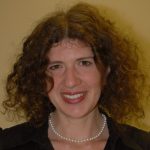I think I will always remember the first time I read the Adverse Childhood Experiences (ACE) studies, which draw a formidable link between experiences in our early lives (including abuse and neglect in the home, parents who suffer from mental illness, and exposure to violence) and our prospects for health and longevity. First conducted at Kaiser Permanente from 1995 to 1997, and continued in partnership with the Center for Disease Control since, they asked more than 17,000 participants questions about their childhood experiences and tracked their health as adults.
Some people read them and feel validated: Finally scientists and doctors are saying it is not, as they feared, their fault they are unwell; they are not crazy or to blame; rather, childhood trauma has definitive and measurable effects on lifelong risk for health issues ranging from heart disease to chronic lung and liver disease, among others. People are relieved to have their experience affirmed in this way.
I reacted differently: As someone who would have checked a good number of the boxes on the list, I despaired. As I understood the data, it meant I was doomed. Because the studies accounted for diet, for healthy lifestyle, for education — essentially, for all the things I have come to believe to be indications that I can, despite what I have experienced, live a healthy and long life. And even then, people with a certain number of these factors present in their early lives were more likely to be unwell as adults. I took the studies to mean that my actions wouldn’t matter, that my future was already written, that the power I thought I had to shape my own life was illusory. And I felt that even from my vantage point, as a white woman with a graduate education, of extraordinary privilege.
So I began to ask questions about survival — not only as it relates to childhood experiences, but also as it relates to other traumatic experiences later in adolescence — particularly experiences of witnessing and surviving violence.
I began to ask questions about the conditions and strategies that help enable certain people and communities to survive, adapt, and even thrive in the face of adversity, trauma, tragedy, threats and loss. I began to ask questions about what helps us get well, and to consider how our connections with others might contribute to that process. That is to say, I began to think about resilience. And luckily, leading researchers in the field began to do the same.
Since the ACE studies, we researchers and professionals in the criminal justice, mental health, and youth development fields have learned or demonstrated that many of us and many of the people we serve have always known intuitively about what helps people survive hard times. We have learned that relationships matter, and we cope better together than apart. We have learned that a single place or person who offers consistent sanctuary can be the difference between life and death — not just in the moment, but also in the long term. We have learned that what and how we learn in our schools can fortify us to contend better with the world around us. And we have learned that our peers are not only people who put us “at risk”— they can also be the people who keep us safe and well.
When we think about risk, we develop strategies to contain what or whom we regard a threat. When we think about resilience, we develop strategies that expand the options for individuals and communities to build attainable, healthy (dare we even say fulfilling and joyful?) futures for themselves and those they love.
Shifting our orientation from an exclusive focus on risk to one that includes resilience does not require us to give up a commitment to accountability or to improving public safety. On the contrary, doing so will increase our chances of achieving just that, in the same way that any time we apply more current, thorough, and accurate knowledge to a problem we arrive at more effective solutions. The shift will, however, require us to grapple with the values, beliefs, biases and assumptions that have created the existing paradigm, as we know it.
That includes facing head-on the issues of social and racial justice that drive the day-to-day realities of our work and the lives of those we serve. It will not be easy. But doing so will give us a real shot at putting into practice the knowledge that proves that a different future is possible.
The poet Adrienne Rich once asked, “What would it mean to live in a city whose people were changing each other’s despair into hope?”
It is within our reach to begin to answer.
